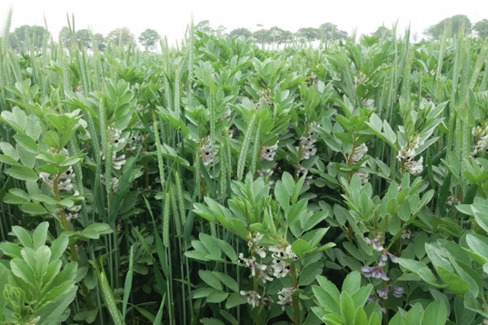
https://ec.europa.eu/eip/agriculture/en/find-connect/projects/bovine-beef-innovation-network-europe
The cultivation of field beans is undergoing a revival due to the increasing demand for local protein source for animal feed and human consumption. In Belgium the cultivation of field beans was not known.
In the search for alternative sources of protein to replace imported soya in animal feed, field beans - whether or not mixed with cereals - appear to be a great candidate for local cultivation and use in animal feed. A vision that supports the policy through various means (e.g. Nitrogen and CAP) to make the most of the advantages of protein crops in crop rotation (soil structure, attracting pollinators, no need for fertilisation, etc.) Field beans yield 4 to 4.5 tonnes per hectare. The crude protein content varies from 25 to 35% per kilogram of dry matter (for soya this is 35-45% CP). This means a total yield of 1.5 tons of crude protein per hectare.
Inagro v.z.w. is a research centre in West Flanders that has collected a lot of crop information and also carries out variety trials on field beans. Inagro has drawn up a cultivation manual (varieties, sowing, fertilisation, weed control, sowing with or without cereals. )

Photo. A combination of field beans and triticale allows to produce more protein on the farm and to buy less soja from outside Europa ( Flanders)
Farmer Salens from Kortenberg (BE) sowed field beans for the first time in 2020. "Winter field beans are best sown in late October or early November. The only thing you have to pay attention to is that you sow eight centimetres deep. I bought a seeder with double discs and a pressure wheel. In the end, the yield was not good (3.75 tons/ha) because you should have four to five tons per hectare. But next year I try to do better."
Furter information:
https://inagro.be/sites/default/files/media/files/2021-07/Teeltfiche_winterveldboon.pdf
https://inagro.be/sites/default/files/media/files/2021-07/teeltfiche-ZOMERVELDBOON-versie.pdf